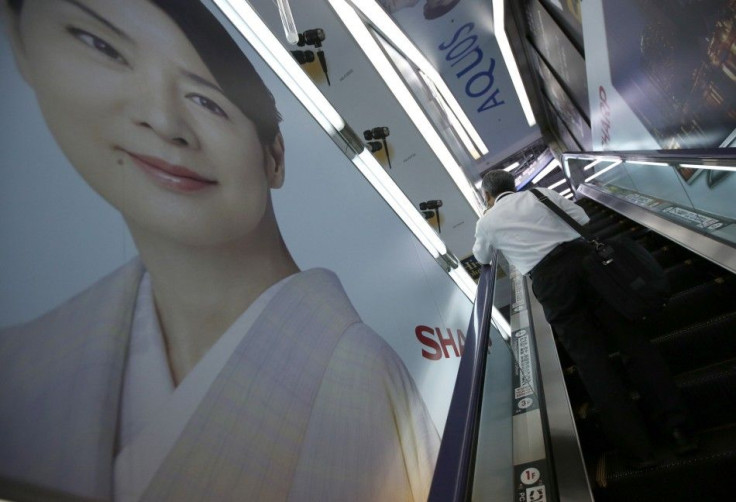Moto G 2014 vs. Sharp Aquos Crystal – Specifications, Features And Price Showdown

Uniquely designed "Sharp Aquos Crystal" with edge-less, bezel-free display has recently been unveiled, while the widely-popular Moto G 2014 was released in September. Readers who are interested in the budget-friendly Moto G 2014 or the latest Sharp Aquos Crystal handset should check out this comparison.
Display, Exterior And Size
Both the smartphones feature the same 5.0-inch display and 720 x 1,280 pixels resolution combined with a pixel density of 294 ppi. Nevertheless, the display technologies used in Motorola and Sharp handsets differ and they are IPS LCD and TFT, respectively.
When it comes to design, the Sharp Aquos Crystal flaunts the unique edge-less display. Meaning, the gap surrounding the periphery of the display from the rear panel is virtually non-existent. This makes the screen look as though it continues to the edges of the smartphone. Furthermore, the device features slim-bezel count fixed on a plastic chassis and provides solid construction. Plus, the Aquos Crystal comes with a brilliant screen-to-size ratio of 78.26 percent, whereas the vast majority of flagships settle for only 70 percent, according to Phone Arena.
The Motorola Moto G 2014, meanwhile, looks like a replica of the 2013 version. Nevertheless, the size of the handsets vary with 4.5-inch (2013) and 5.0-inch (2014) displays. Motorola has used the same plastic material for the chassis and the alterable back shell option persists. Apparently, the quality of the build material has improved to a great extent, making the Moto G 2014 model a desirable replacement for the 2013 variant, Phone Arena reports.
Speaking of size, the thickness and weight of the 2014 Moto G and the Aquos Crystal are (0.43-inch and 149 g) and (0.39-inch and 141 g) respectively. Therefore the Sharp handset is lighter and thinner than the Motorola handset.
Hardware, Software And Memory
Here again, both the devices are powered by the same quad-core (Qualcomm Snapdragon 400) Cortex-A7 processor, clocked at 1.2 GHz. While the Sharp Aquos Crystal is backed by a solid 1.5 GB of RAM, the Moto G settles for 1 GB. Plus, the Moto G runs on Android v4.4.4 KitKat OS (upgradable to Android Lollipop), whereas the Aquos Crystal runs on stock Android v4.4.2 KitKat OS.
As far as the memory goes, the Sharp smartphone is equipped with 8 GB of internal storage, while the Motorola device comes with a choice of 8 GB and 16 GB. Additionally, both the smartphones support microSD card. The expansion limits of Motorola and Sharp handsets stand at 32 GB and 128 GB, respectively.
Camera And Battery
Both the phones sport the same 8 MP rear-facing camera unit with LED flash. Plus, the Sharp Aquos Crystal features a 1.2 MP unit as the secondary shooter, while the Moto G houses a 2 MP unit for selfies. Moving on to battery configuration, the Moto G is backed by a Li-Ion 2070 mAh unit, whereas the Aquos Crystal comes with a similar Li-Ion 2040 mAh unit.
Misc
1. To get the edge-less display, Sharp has located the light/proximity sensor, front-facing camera unit and the notification light at the bottom-end of the display. Furthermore, there is no earpiece speaker on this smartphone. Therefore, the call quality is rather disappointing. Sharp has utilised the direct wave receiver in place of the earpiece. Meaning, the whole phone vibrates to produce sound with the help of bone conduction technology.
2. The Moto G handset comes with alterable rear panel option via Moto Maker, whereas the Sharp device doesn't. Additionally, one of the variants of Moto G supports dual-SIM, while the Aquos Crystal doesn't.
3. Both the phones come equipped with Bluetooth, microUSB and Wi-Fi support. While the Sharp Aquos Crystal supports 4G LTE, the Motorola handset doesn't.
Price
The Sharp Aquos Crystal (8 GB, 4G LTE) is priced at US$149.99 via Boost Mobile (roughly translates to AU$170). The Moto G handset (8 GB, dual-SIM), on the other hand, is priced at AU$259.95.
Also Read
1. Samsung Galaxy Note 4 Hits 4.5M Sales In 30 Days And A New Samsung Ad Celebrates Note 4's Brilliant Camera [Watch Video] - [Read]
2. Motorola Moto X's Advanced Voice Control Allows Users To Assign Any Name And The Handset Responds Back [Watch Video] - [Read]
3. Nexus 9 Release Date Postponed To Dec. 15 In Amazon UK But Google Play Store Release Set For Nov. 3 - [Read]




















